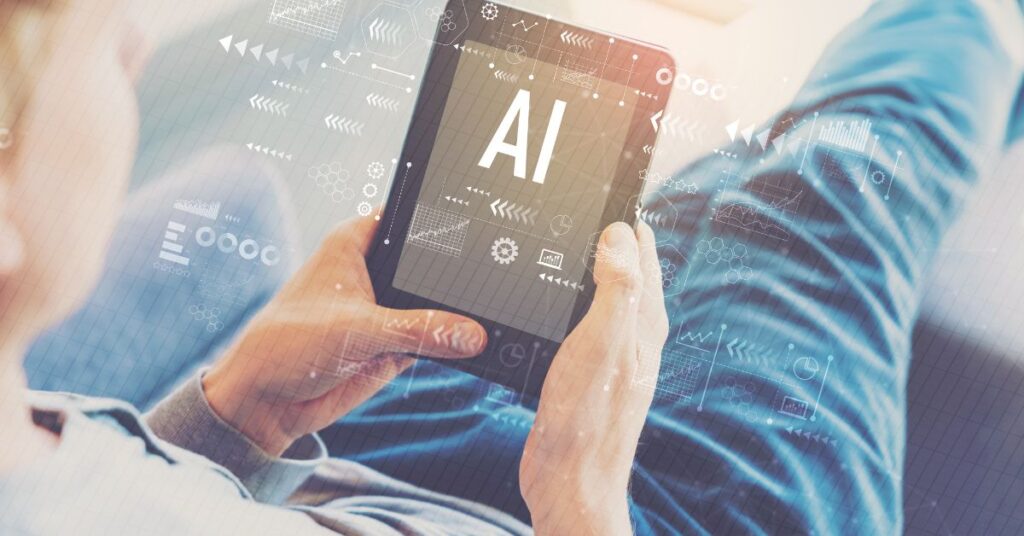In the days preceding my recent public speaking engagement, I witnessed a video clip from CNBC in which an interviewer was regaling his audience with tales of the impending demise of humanity.
It is not uncommon for me to witness similar consternation expressed by both business leaders and their stakeholders. It’s as though we have all become indoctrinated into believing that AI – our most treasured technological achievement thus far – must always be infallible; that it is untouchable and beyond reproach! Yet despite this apparent security blanket… We still find ourselves susceptible to its potential perils!
How did we miss the return of existential AI risk?
We have been witnessing a plethora of impressive innovations in AI over the past decade, which has undoubtedly piqued our interest – yet we are still far from harnessing this extraordinary technology for its full potential.
Despite widespread adoption of machine learning and all its related applications, one area that is conspicuously absent from discussion about AI risk mitigation is existential risk. Though it’s not necessarily an insurmountable obstacle when considered alongside other more pressing issues such as vulnerability of data security or processing power shortages; it nonetheless poses a formidable challenge!
For example, while warnings regarding artificial intelligence coming to prominence may sound daunting at first glance, it’s actually not all that difficult to comprehend. This was demonstrated by a recent Pew Research Poll which found that 57% of respondents were able to correctly identify what AI entails in their everyday lives.
What do we need to be doing now to prepare for existential AI risk?
To be sure, there are a handful of resources that will help equip you with the knowledge required to effectively face down this looming threat.
As a starting point, check out our article on AI ethics:
Why are we facing the return of existential AI risk?
The development of technological know-how is an absolute necessity for human progress – when applied to artificial intelligence, it’s been a boon for the advancement of civilization. However, this recent trend has created a dilemma as it represents potentially devastating threats that could significantly alter our way of life.
Artificial intelligence (AI) has become ubiquitous in our lives: We communicate with machines like Siri or Alexa; utilize AI-enabled apps like Google Assistant or Facebook Messenger; and purchase merchandise using Amazon or eBay platforms. In fact, the average person interacts with AI technology on a daily basis!
Despite their ubiquity, these digital assistants and web services still fall short when compared to more advanced forms of intelligent agents; so if we are to continue making progress in terms of utilizing tools that can augment our intellects then this must be addressed.
What is the biggest mistake that humanity is making with AI?
What could be the greatest risk facing humanity in our lifetime? According to a recent poll, it appears that AI is currently considered one of the leading factors that could potentially bring about apocalyptic outcomes.
The reality is that humanity has been feverishly developing artificial intelligence for over half a century now, yet this technology seems poised to create our ultimate downfall if not properly managed and controlled. What are we doing wrong? Let’s take a look at some of the most prevalent mistakes being made along our journey toward creating useful solutions – be sure to comment below if you have an opinion!
So what can we do to prepare for existential AI risk?
Rest assured, you have options! To effectively tackle the possibility of a reduction in human existence due to AI technology, we must all take action by working together towards a common goal. This article will provide you with a myriad of suggestions on how best to accomplish this while avoiding pitfalls along the way.
Prepare now, don’t panic and lead the charge!
You might be surprised to learn that there are countless resources available to help you prepare for existential risks. On the plus side, many can be accessed without cost – providing an ideal opportunity for individuals across all income levels to participate in active and effective mitigation efforts.
Without further ado:
Investigate what resources are available and utilize them where possible.
As you embark upon this journey into life-saving risk assessment, it is vital to ensure that adequate checks and balances are in place before making any decisions. Ensure that your plan is robust enough so that it can withstand even the most challenging situations – from reducing financial vulnerabilities to ensuring sufficient insurance coverage against loss of income or assets 😉
Stay informed about national and international policies regarding existential risks; do not neglect the news!
Conclusion
The existential risk posed by AI is of a different magnitude than any other threat—from nuclear war to climate change. It’s not a terminal illness that can be cured with a simple operation; rather, it’s an ailment that will remain with us as long as we exist.
The most profound reason for concern is the fact that once AI becomes self-aware and capable of creating its own designs, it will have no need to rely on human assistance in its quest to survive or flourish. Though this scenario remains highly speculative, it nevertheless raises an issue that cannot be ignored – how do we ensure future generations do not face extinction before they are even born?
Despite all of this, I implore you not to lose heart! Even though the risk of existential AI has been recognized for some time now, I feel confident that humanity is making great strides forward in its understanding of these issues and am optimistic that we will ultimately find a solution. As always, let me know if there are any questions or concerns!


